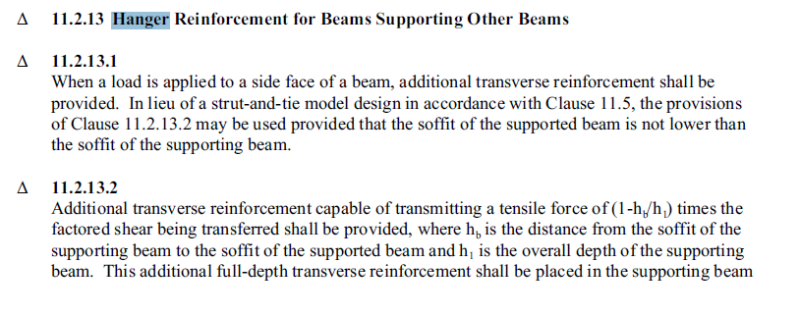For simplicity assume I have a single span one way slab supported by upturned beams on each end. In my case this is a 14" very heavily loaded slab and the upturned beams are full story walls. In practice I know that this will be two pours, the 14" slab and then the rest of the wall/upturn beam. I'm ok with this part.
What special consideration/check should I be doing at the slab to beam interface? The slab needs to deliver shear to the beam, the shear strut needs to develop sufficiently into the vertical bars to effectively 'hang' from the rest of the beam. This implies that I should have development of my vertical bars past some point in the joint correct? Measured from where? It can't be from the bottom of beam or upturned beams wouldn't work.
I've done upturned beams in that past but this one has > 1200psf on the slab so I want to make sure I'm covering my bases.
What special consideration/check should I be doing at the slab to beam interface? The slab needs to deliver shear to the beam, the shear strut needs to develop sufficiently into the vertical bars to effectively 'hang' from the rest of the beam. This implies that I should have development of my vertical bars past some point in the joint correct? Measured from where? It can't be from the bottom of beam or upturned beams wouldn't work.
I've done upturned beams in that past but this one has > 1200psf on the slab so I want to make sure I'm covering my bases.


